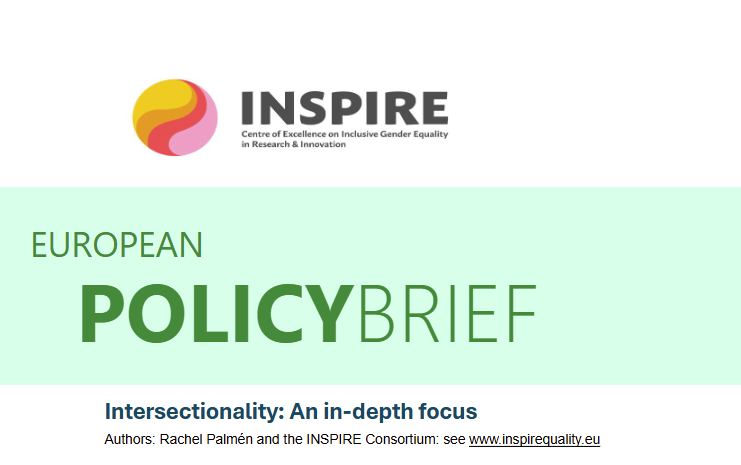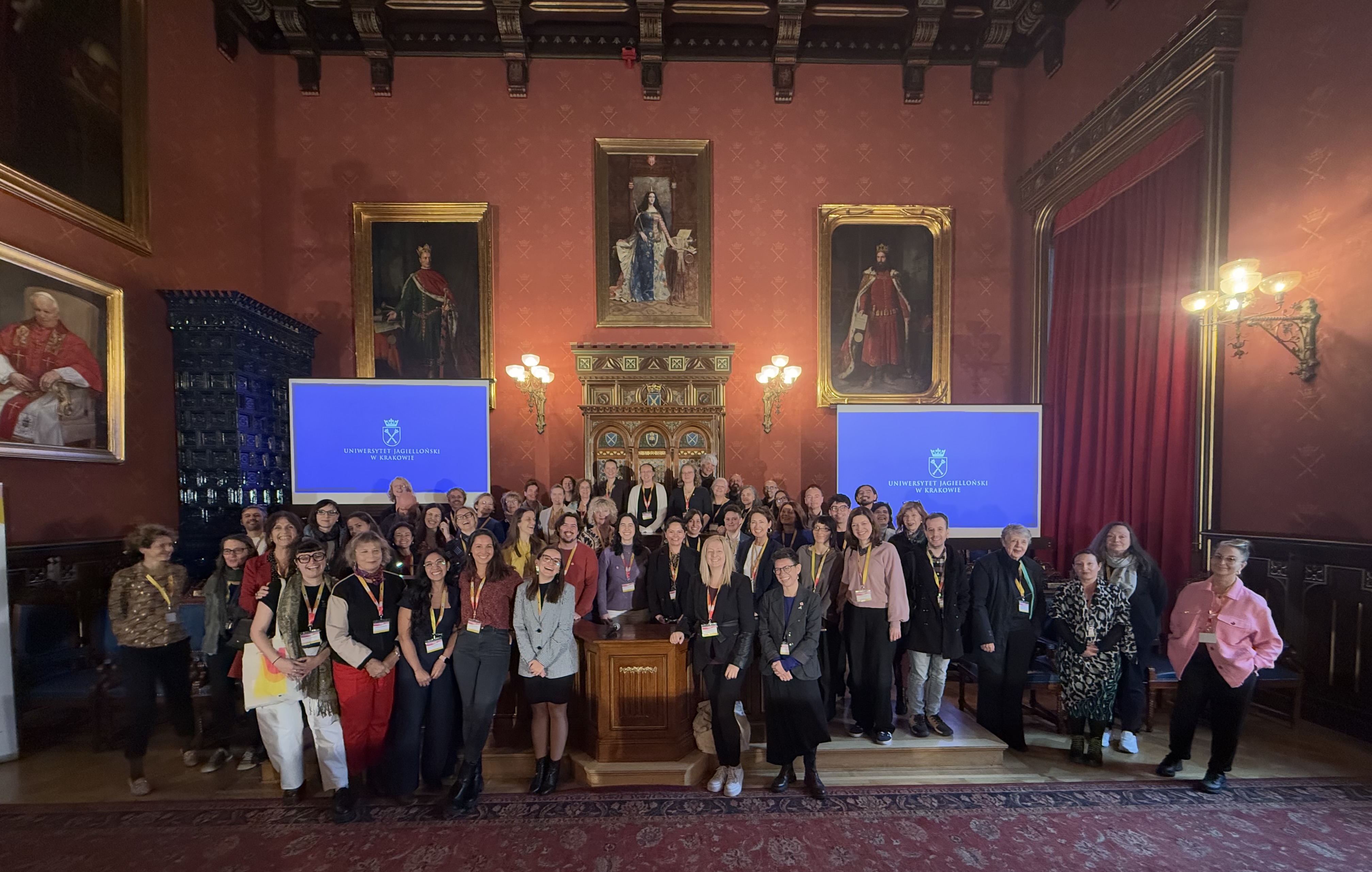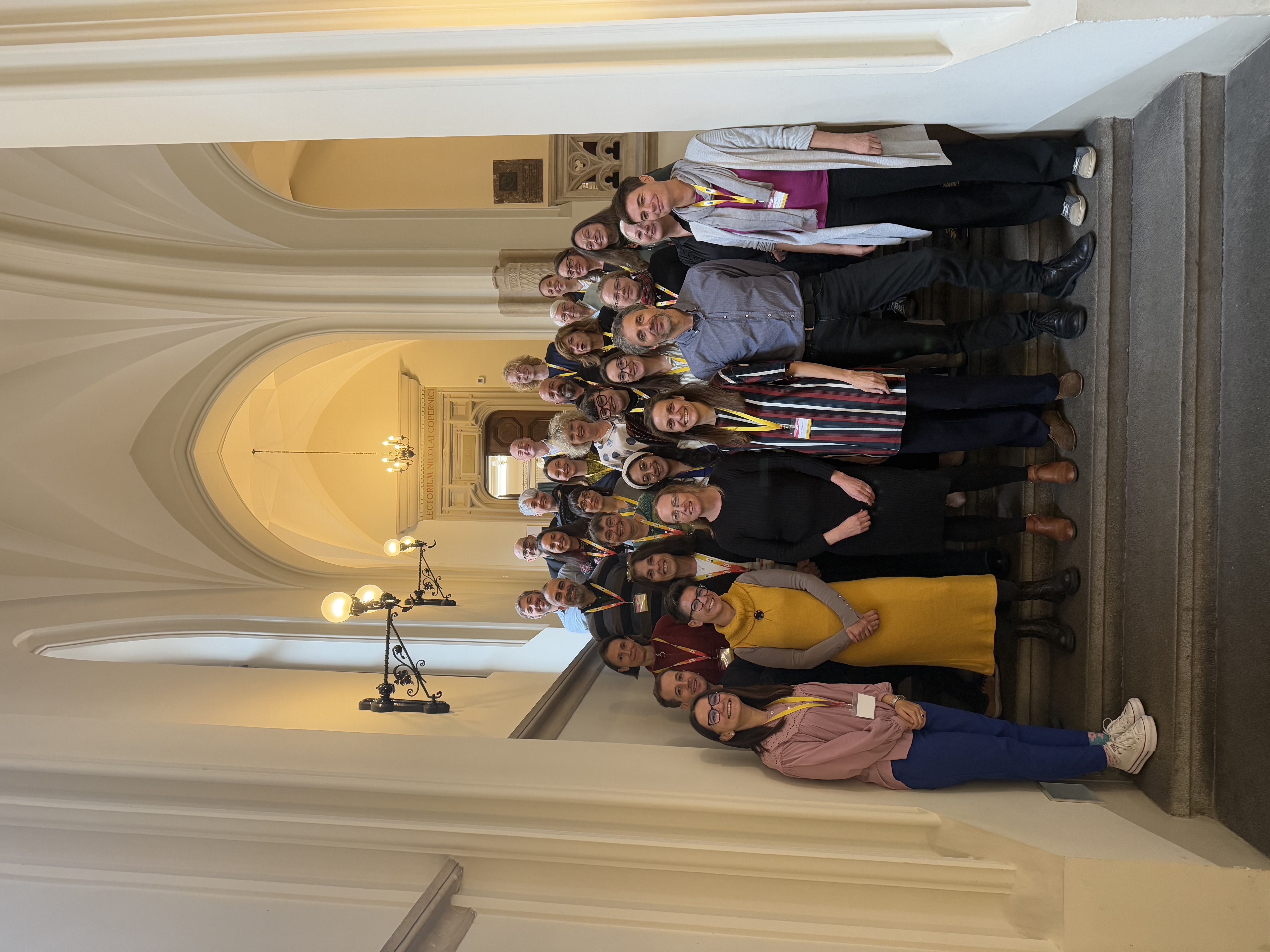The She Figures 2024 report, the latest Europe-wide statistics on gender equality in Research and Innovation, reveals persistent and complex inequalities and highlights the importance of adopting an intersectional lens. Yet, this comes at a time when we are currently witnessing a backlash against science as well as against gender equality, diversity and inclusion interventions and policies, fuelled by the global rise of far-right and anti-gender politics and movements.
Translating intersectionality from theory into practice remains, nevertheless, a major challenge for research and innovation organisations. To address these challenges, Rachel Palmén and the INSPIRE Consortium members have created a new policy brief offering practical guidance on integrating intersectionality into gender equality plans (GEPs) and policies. Based on survey data on GEP prevalence and monitoring and the results of a knowledge exchange event held in Vienna in September 2024, the brief distils key insights and useful recommendations for policy makers from four thematic working papers on: sustaining change, widening participation, intersectionality, and innovation.
Policy implications and recommendations
Intersectionality can be a powerful tool for building alliances and fostering more inclusive research environments. INSPIRE promotes a collaborative, community-based approach to knowledge production and practice for universities, research centres, and research funding organisations working on inclusive gender equality and innovation. The new INSPIRE policy brief sets out steps oriented to different types of institutions, to transcend different governance levels and foster collaboration to embed intersectionality in policy and practice:
European Commission:
- Data collection: the expanded indicators in She Figures 2024 are a step forward. To effectively address intersecting inequalities, the collection of context-sensitive yet comparable data on race, ethnicity, gender, migration status, and other socio-demographic factors must be advanced.
- Sustaining change: the EU Commission plays a vital role in enforcing accountability for Gender Equality Plans (GEPs). To deepen impact, intersectionality should be embedded in the GEP framework and made a permanent requirement for EU research funding, as recommended by ERA Subgroup 5.
National Authorities:
- Tailored guidance: national bodies should develop intersectional strategies adapted to their specific contexts, in consultation with underrepresented groups.
- Monitoring and evaluation: even in early stages, intersectional initiatives must include mechanisms to assess disparities, progress and impact.
Research Funding Agencies:
- Early engagement and support: reaching out to potential applicants and providing guidance before the application stage helps applicants better align with inclusive gendered innovation goals.
- Cross-sector collaboration: partnerships across public, private, and academic sectors promote gendered innovation principles and enrich projects with diverse perspectives.
- Evaluator training and support: providing ongoing training and engaging evaluators throughout the project lifecycle improves the quality of assessments and the integration of inclusivity in funded projects.
Research Performing Organisations and Higher Education Institutions
- Data collection and ethics: tools such as voluntary self-declaration questionnaires can help to uncover patterns of inequality within organisations, if privacy and transparency are guaranteed.
- Incorporating intersectionality into institutional missions and goals: aligning intersectional principles with broader strategies (e.g. sustainability or human rights) strengthens their relevance and impact.
- Engage privileged groups: involving senior white men into strategies and action plans for inclusive gender equality, especially those in privileged positions, is key for gaining widespread institutional support. Constructive dialogue on privilege and power relations, guided by skilled facilitators, can drive change.
- Bottom-up change: academic and student communities initiatives and activism -both within and outside institutions - play a vital role in legitimizing equality policies, promoting care-centered approaches, and driving sustained action.
- Context matters: the variables of discrimination to be considered and the intersectional strategies to be adopted must be relevant to the particular context. There is no one-size-fits-all checklist.
- Situational and relational perspectives: intersectionality offers a powerful lens to deeply engage with people’s lived realities, needs, and voices. We suggest approaching intersectionality focusing on the specific practices and experiences of domination that emerge within different contexts.
You can read the full Intersectionality: An in-depth focus policy brief in open access here.
Author: María José Romano, FUOC



